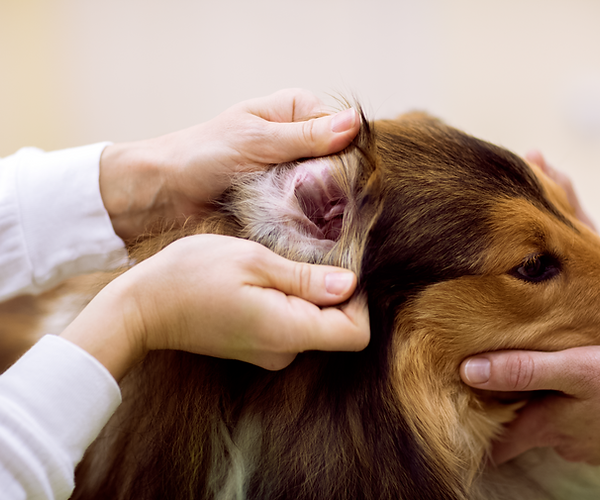
New research using MiDOG technology unveils possible new solution to total ear canal ablation.
Listen up! Could the latest research be a new solution to a very painful ear condition?
Dog ear infections are very common and as many as 20% of dogs have at least one ear infection during their lifetime. Prevention is key, involving regular visits to the veterinarian and appropriate cleaning of the ear and ear canals. Just like any other location of the dog’s body, the ear has a unique microbiome comprised of bacteria and fungi. These microbes can form a protective banner and most of them are typically commensals. But in some cases, they can cause painful infections. Chronic ear infections can result in a complete change in this microbiome, also called dysbiosis.
So far very little is known about what exactly such a microbial dysbiosis looks like and how it compares to a normal healthy dog ear. Many of those microbes are difficult to grow in the laboratory as they may take several weeks to grow on the artificial media like fungi for example, or they don’t grow when oxygen is present.
In a collaboration between Texas A&M University and MiDOG LLC, researchers conducted a study to identify the microbial makeup of dog ears in health and disease. Understanding the microbial ecology of the ears is very crucial in order to understand how ear infections evolve, how they can be best treated, and how they could be caught even before they are causing any pain to the patient.
As many of these bacteria and fungi don’t grow in the laboratory, they used a new tool: Next-Gen Sequencing. This allows for the accurate identification and quantification of all bacteria and fungi that are present in the dog’s ear at once. No matter how slow they grow or if we don’t know how to grow them in a laboratory at all.
“We were able to see that the ears of clinically affected dogs have a less rich microbial diversity when compared to healthy dogs,” said Dr. Marc Van Eden, one of the researchers in the publication published in Veterinary Microbiology in June 2020. “We saw a high abundance of fungi as well as bacteria, yet standard veterinary clinical diagnosis more often than not only includes bacterial culture testing. Therefore, the fungal population is often completely overlooked.”
In addition to the fungal population, the team was able to characterize a potential opportunistic pathogen that was previously not described in ear infections.
“Having such an unprecedented large data set of hundreds of healthy and clinically affected ears, allowed us to use different algorithms to identify members of the microbiome that are specifically enriched in diseased ears”’ said Dr. Krumbeck, senior author of the study. “This way we were able to identify Finegoldia magna as a novel, potentially very important player in canine ear infections.”
The team of researchers in this study concluded that this type of NGS-based microbial analysis will be the next gold standard to characterize ear infections in veterinary medicine.
This new technology has already proven that it worked better than traditional culture! Read here about little Heidi, who almost had a bilateral Total Ear Canal Ablation (TECA), a painful surgery to remove her ear canals on both sides. It turned out that she didn’t have a bacterial infection, but a fungal infection that was diagnosed with the help of the MiDOG All-in-One Test. Read more about her story here.
Categories: Dogs, Ear Health

